This is the latest blog in CityHealth’s monthly series exploring the 2.0 policy package. Sign up for our newsletter to learn about our new policy solutions, tools, and resources.
By Katrina Forrest, JD, and Catherine Patterson, MPP, CityHealth’s co-executive directors
On many public streets in cities across America, people who walk, bike, roll, drive, or use public transit face deadly risks. Each day in 2019, an average of 17 people were killed by drivers while walking on the street. Shockingly, from 2010 to 2019, the number of pedestrian fatalities increased by 45% — and since the COVID-19 pandemic, most states have seen that number grow even higher. For many, the risk is even greater; Black Americans, older adults, people in low-income communities, and American Indian or Alaska Native people all face much higher levels of risk than other Americans.
This month, we’re continuing our series on CityHealth’s new 2.0 policy package with a look at Complete Streets. Our Complete Streets policy was included in our inaugural policy package in part due to a strong evidence base suggesting that these policies can help all people have safe and convenient ways of getting around — and provide opportunities for active living.
CityHealth and Smart Growth America recently explored Complete Streets policies in three cities — Pittsburgh, Louisville, and Tucson — in a video series released this month. Learn how city leaders and advocates worked to pass local policies that benefit everyone in their communities:
PITTSBURGH’S STORY
LOUISVILLE’S STORY
TUCSON’S STORY
Complete Streets policies have resonated with cities, and many have taken action to adopt or improve local ordinances. In CityHealth’s first assessment in 2017, 16 cities earned gold, 14 cities earned silver, and 1 city earned a bronze for their Complete Streets policies. In our most recent assessment, the number of gold medal cities has nearly doubled — 30 cities earned gold, 7 earned silver, and one earned bronze. Only two cities that CityHealth assessed didn’t receive Complete Streets a policy medal.
As part of the revamped 2.0 policy package, CityHealth set a new bar for Complete Streets policies by adding criteria designed to help cities decrease injuries and death, support healthy living, ensure accessibility, and promote equity. As the initiative expands to partner with America’s 75 largest cities, there’s ripe opportunity for cities to adopt these policies and build safer, healthier streets for all.
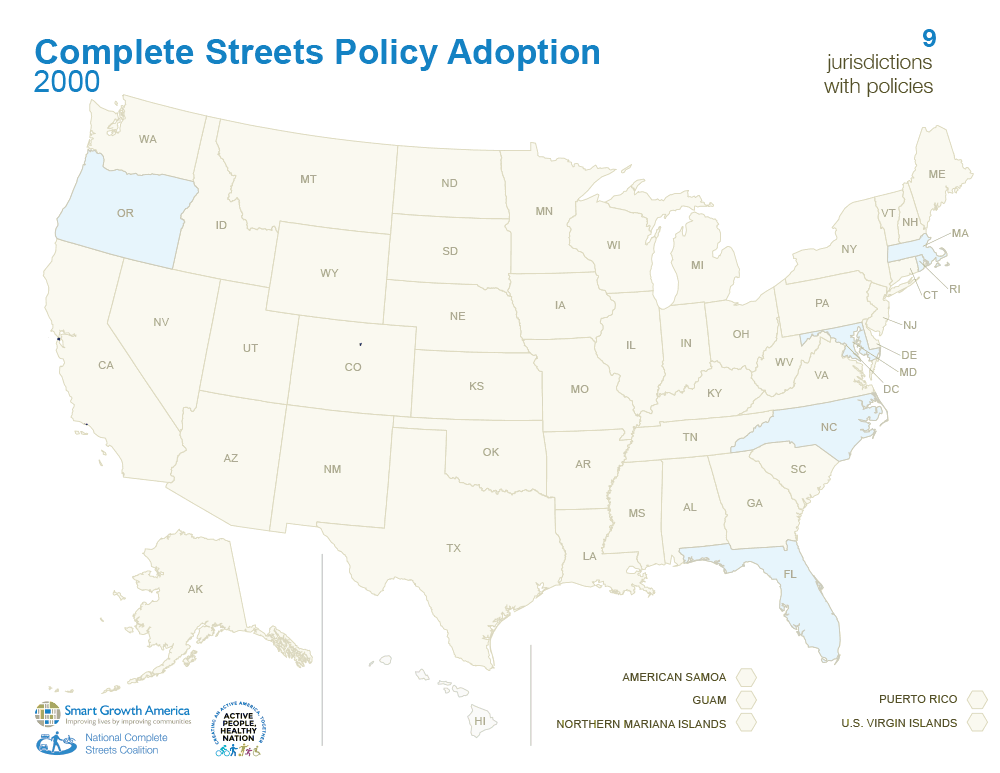
Map courtesy Smart Growth America
The Challenge: Dangerous Streets
Simply put, the design of streets matters when it comes to the health and safety of the people who use them. Poorly designed streets — coupled with changes in driving habits and the types of vehicles on the road — have resulted in perilous conditions for many users. Although the rate of walking as a percentage of total trips has stayed around 10.5%, people are driving more miles per year, and are increasingly buying larger vehicles that can pose a higher danger to pedestrians and cyclists. Trucks and SUVs are two to three times more likely than smaller vehicles to kill pedestrians in the event of a crash.
The risks from dangerous street design are not shared equally. According to Smart Growth America, between 2010-2019, Black pedestrians were struck and killed by drivers at an 82% percent higher rate than White, non-Hispanic pedestrians. That disparity climbs to 221% when looking at American Indian and Alaska Native people. Similarly, the pedestrian fatality rate in the lowest-income neighborhoods was nearly twice that of middle-income census tracts and almost three times that of higher-come neighborhoods. Protecting the safety of all people who use city streets, especially those most vulnerable to being struck and killed, should be reflected in the local policies that communities adopt.
Complete Streets: A Tried and Tested Policy Solution
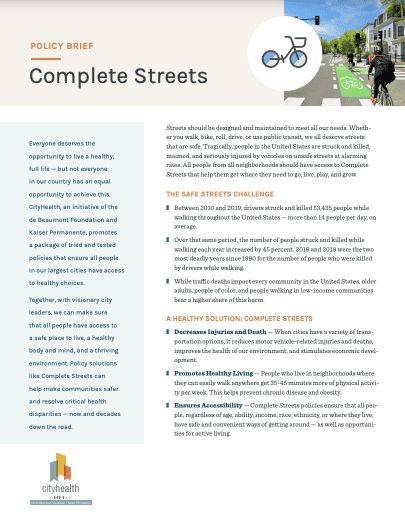
Download CityHealth’s 2.0 policy brief on Complete Streets
Everyone deserves streets that are safe. Streets should be designed and maintained to meet all our needs and help all people get where they need to go. Complete Streets policies can help cities design and build infrastructure that keeps buses and trains on schedule, reduces traffic congestion, and makes sure kids have safe routes to school.
The Centers for Disease Control and Prevention suggests that lives could be saved by expanding access to a variety of transportation options and integrating health-enhancing choices into transportation policy. There is a growing body of evidence that Complete Streets policies can encourage an active lifestyle by creating opportunities — such as through sidewalks or bike lanes — that can help reduce unhealthy weight gain and weight-related diseases.
Earning CityHealth Gold
Later this year, CityHealth will assess the nation’s largest 75 cities on their Complete Streets policies. Cities can earn a gold, silver, or bronze medal based on how the city performs on 13 key criteria:
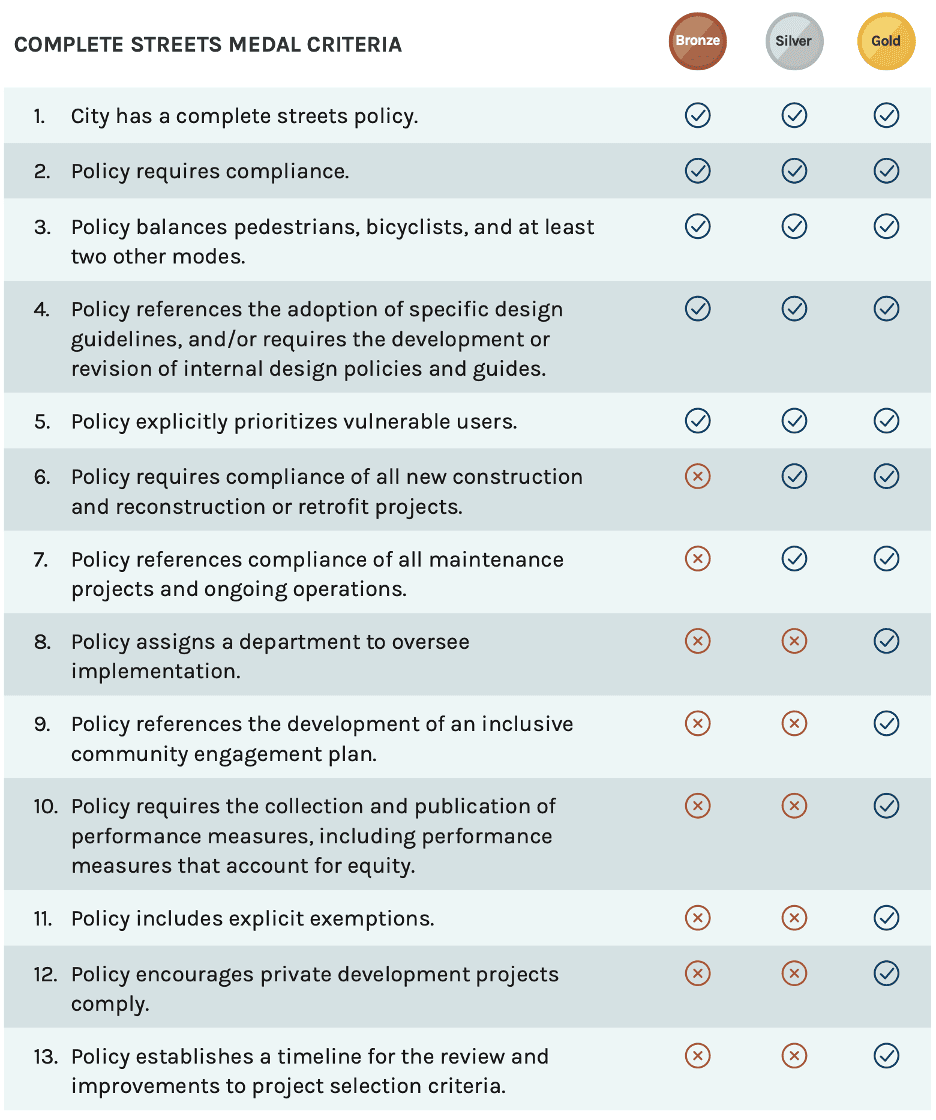
CityHealth is a resource for city leaders, policymakers, and advocates pursuing policy change that can help all residents live healthy, full lives. Have a question about Complete Streets or any of our other policies? Please feel free to send us an email, and join us to learn more about the tools, research, and technical assistance opportunities from CityHealth and our partners.

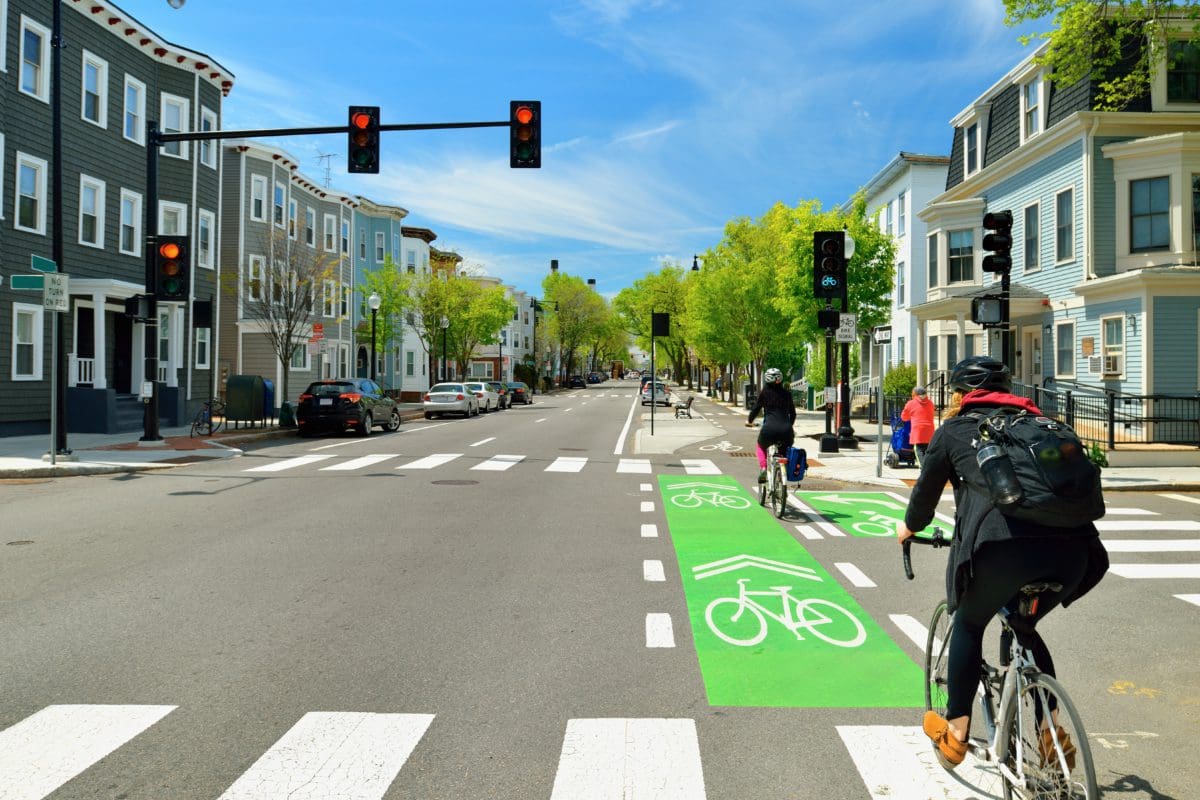
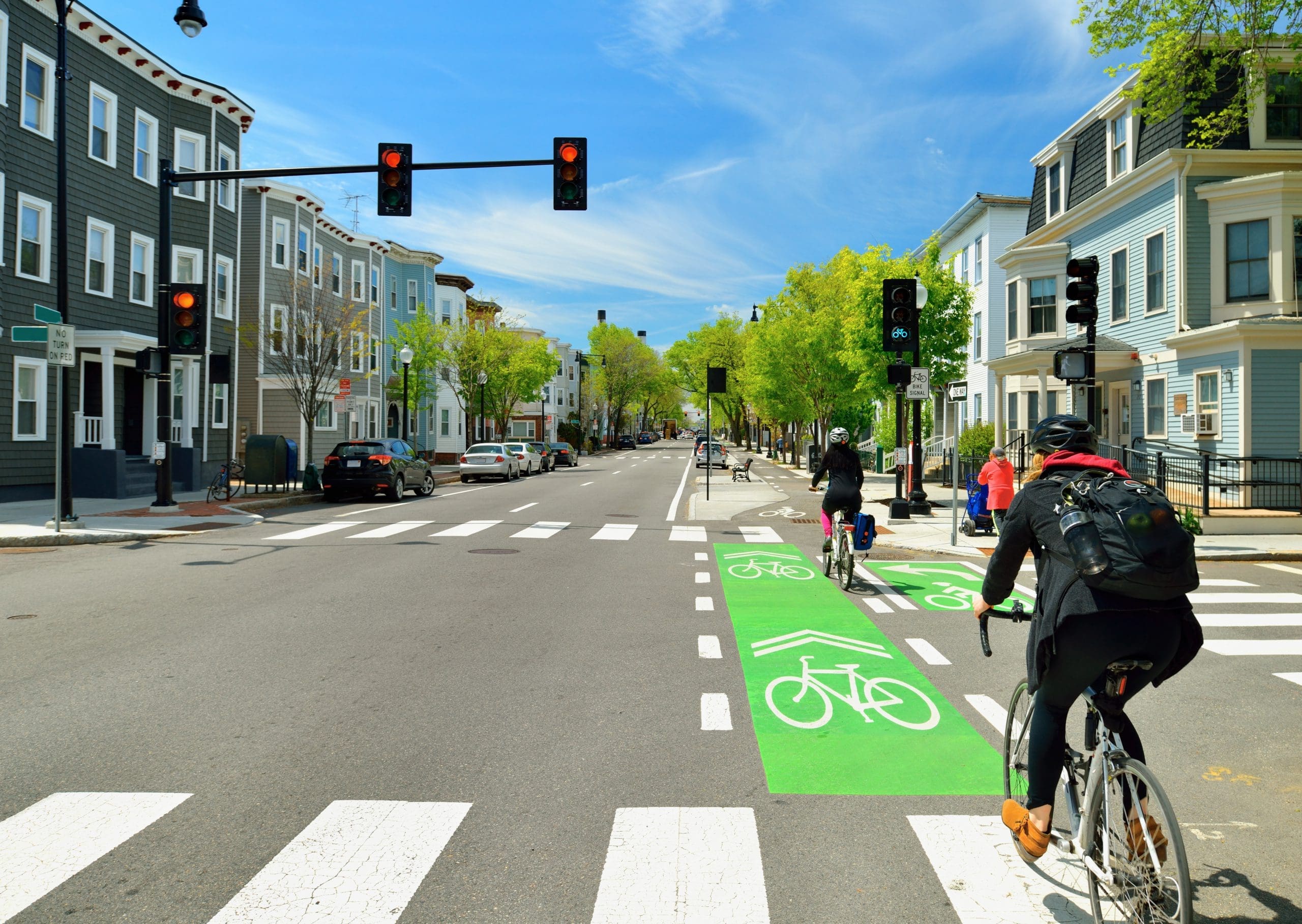
 Katrina Forrest, J.D., is Co-Executive Director of CityHealth. Learn more about Katrina
Katrina Forrest, J.D., is Co-Executive Director of CityHealth. Learn more about Katrina  Catherine Patterson, MPP, is Co-Executive Director of CityHealth. Learn more about Catherine
Catherine Patterson, MPP, is Co-Executive Director of CityHealth. Learn more about Catherine 

